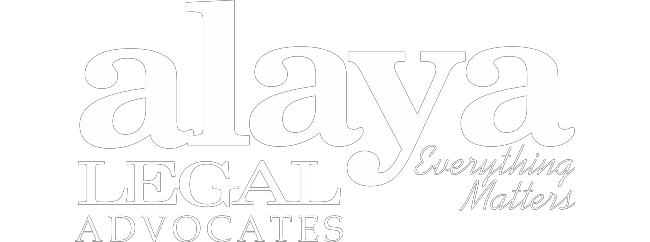| Date | Version | July 23, 2022| 1.0 |
| Part: | PART 2 [Regulatory Framework of renewable energy in India] |
| Keywords | ‘Renewable energy’, ‘Renewable Purchase Obligation’, ‘Renewable Energy Certificate’. |
| List of Legislation Referred. | i. The Electricity Act, 2003
ii. Electricity (Promoting Renewable Energy Through Green Energy Open Access Rules) 2022 iii. Central Electricity Regulatory Commission (Terms and Conditions for Renewable Energy Certificates for Renewable Energy Generation) Regulations, 2022 iv. Draft National Renewable Energy Act, 2015 v. The Energy Conservation Act, 2001 |
| Jurisdiction | India |
Abstract: This three-part series seeks to provide insight with respect to use, impact and, the regulation in relation to renewable energy in India. Each part of the series deals with the following:
Part 1: General: This part provides a general overview of the commercial aspects of renewable energy sector in India and the reasons for its increasing use.
Part 2: Regulatory Framework of renewable energy in India: This part details the legal framework pertaining to renewable energy in India and the initiatives/measures taken by the Government to promote its use.
Part 3: Miscellaneous: This part of covers, among other things, queries related to storage and transmission, pricing and cost recovery, taxation, labour and employment, as well as financing in renewable energy sector.
Part 2: Regulatory Framework of renewable energy in India
- What are the requirements for the generation of renewable energy in India?
- According to the Electricity Act 2003, a generating company does not require a license for establishing, operating, and maintaining a generating station for the generation of electricity, if it complies with the technical standards for the construction of electrical plants, electrical lines, and connectivity with the gridreferred to in Central Electricity Authority (Technical Standards for Construction of Electrical Plants and Electric Lines) Regulations, 2010. However, the owner of any electrical installation of voltage exceeding 650V is required to apply to the Electrical Inspector for his approval under Central Electricity Authority (Measures relating to Safety and Electric Supply) Regulations, 2010.
- Notwithstanding the foregoing, any generating company intending to set up a hydro-generating station is required to prepare and submit a scheme to the Central Electricity Authority.The Electricity Act, 2003, however, mandates that a license shall be required to: (a) transmit electricity; (b) distribute electricity; or (c) undertake trading in electricity.
- Solar Photo Voltaic (PV) Power Projects, Solar Thermal Power Plants and the Development of Solar Parks do not require an Environmental Impact Assessment.
Further, consents to establish or operate by the respective State Pollution Boards, under the Air (Prevention and Control of Pollution) Act, 1981 and Water (Prevention and Control of Pollution) Act, 1974 are not required for industrial sectors categorized as ‘white industries’, i.e., industries engaged in solar power generation through a solar photovoltaic cell, wind power and mini hydel power.
- What is the legal framework governing the renewable energy sector in India?
- The Electricity Act, 2003:
- The Electricity Act is the primary legislation regulating the production, distribution, trading, and usage of electricity in India. While the said Act does not define the term renewable energy, it regulates the development of the country’s power system based on optimal utilization of resources, including renewable sources of energy.Renewable Energy is defined under the Electricity Regulatory Commission (Terms and Conditions for Tariff determination from Renewable Energy Sources) Regulations, 2017. It refers to the grid quality electricity generated from renewable energy sources.
- The Electricity Act, 2003 has entrusted the State Electricity Regulatory Commissions (SERCs) with the responsibility to promote renewable energy sources. According to Section 86(1)(e),it is mandatory for the State Electricity Regulatory Commissions (SERCs) to “promote cogeneration and generation of electricity from renewable sources of energy by providing suitable measures for connectivity with the grid and sale of electricity to any person, and also specify, for purchase of electricity from such sources, a percentage of the total consumption of electricity in the area of a distribution licensee.”
- In April 2020, the Ministry of Power introduced the Draft Electricity (Amendment) Bill, 2020 proposing amendments to the 2003 Act, which is yet to be passed by the Parliament.
Electricity (Amendment) Bill, 2020 contemplates the formulation of a National Renewable Energy Policy for the promotion of the generation of electricity from renewable sources of energy and prescribes a minimum percentage of purchase of electricity from renewable and hydro sources of energy. The said Bill also proposes to impose a penalty for non-compliance with Renewable Purchase Obligations (RPO), as required under Section 86(1)(e) of the Electricity Act, 2003.
Understanding the complexities of Energy related infrastructure, laws and regulations are crucial for navigating the legal landscape in the ever-evolving field of sustainable development.
- Electricity (Promoting Renewable Energy Through Green Energy Open Access) Rules, 2022
- With the aim of promoting the use of green energy in the country, the Draft Electricity (Promoting Renewable Energy through Green Energy Open Access) Rules, 2021 was proposed by the Ministry of Power for seeking public comments. Consequently, on June 6, 2022, the said Rules were notified with immediate effect.
- The said Rules are applicable to generation, purchase and consumption of green energy by entities that have contracted demand or sanctioned load of 100 kW or above except for captive consumers.
- According to Rule 4 of said Rules, there shall be a uniform renewable purchase obligation, on all obligated entities in area of a distribution licensee and, any entity, whether obligated or not may elect to generate, purchase and consume renewable energy as per their requirements by one or more of the following methods:
- Own Generation from renewable energy sources: There shall not be any capacity limit for installation of power plants from renewable energy sources, by entities for their own consumption and such plants may be set up at any location in India and power shall be transmitted by using open access:
Provided that the generating plant may be set up by the entity itself or by a developer with which the entity enters into a power purchase agreement.
- By procuring Renewable Energy through Open Access from any Developer either directly or through a trading licensee or through power markets.
- Central Electricity Regulatory Commission (Terms and Conditions for Renewable Energy Certificates for Renewable Energy Generation) Regulations, 2022
- The Central Electricity Regulatory Commission (Terms and Conditions for Renewable Energy Certificates for Renewable Energy Generation) Regulations were first introduced in 2010 for “the development of market in power from Non Conventional Energy Sources by issuance of transferable saleable credit certificates.” Such certificates were categorized under two heads, i.e., solar and non-solar, and were sold only to obligated entities to enable them to meet their obligations for purchase from renewable energy sources for solar and sources other than solar, respectively.
A Renewable Energy Certificate, therefore, is a market-based instrument used to promote renewable energy generation and ensure compliance with renewable purchase obligations by way of its redemption at a Power Exchange.
- The Central Electricity Regulatory Commission notified the Central Electricity Regulatory Commission (Terms and Conditions for Renewable Energy Certificates for Renewable Energy Generation), 2022, and disregarded the categorization of renewable energy certificates.Further, the eligibility requirements for granting Renewable Energy Certificates (RECs) are now extended to include distribution licensees, captive generating stations, and open access consumers.
- Draft National Renewable Energy Act, 2015
- The Ministry of New & Renewable Energy (MNRE) introduced a draft Act in 2015 to “promote the production of energy from renewable energy sources, in order to reduce dependence on fossil fuels, ensure energy security and reduce local and global pollutants, keeping in view economic, financial, social and environmental considerations, and for matters connected therewith or incidental thereto.”The key provisions of the said draft Act may be summarized as follows:
- National Renewable Energy Policy:The Government has proposed the formulation of this Policy under the Electricity (Amendment) Bill, 2020.
- Renewable Energy Fund:The Act requires the Ministry of New & Renewable Energy to establish a National Renewable Energy fund, which will be operated solely by the Central Government. This fund may be used for fulfilling the objectives set out in the Act. Besides the National Fund, the State Governments may also establish a State Fund to promote the use of renewable energy sources.
- Although the said draft Act intended to provide a separate piece of legislation regulating renewable energy, it has not been implemented yet.
- The Energy Conservation Act, 2001
- The Energy Conservation Act, 2001, focuses on the efficient use of energy, including energy generated from renewable energy sources, and its conservation. Recently, after consultation with the stakeholders, the Ministry of Power has proposed to amend this Act to promote clean energy consumption.
- The Energy Conservation (Amendment) Bill was passed by both the houses of the Parliament in 2010. However, Presidential assent for the same is awaited. It seeks to amend the Energy Conservation Act 2001. The said Bill includes provisions pertaining to:
- “Defining a minimum share of renewable energy in overall consumption by the industrial units or any establishment.
- Additional incentives in the form of carbon credits against deployment of clean technologies in the private sector
- Promotion of green hydrogen as an alternate to the existing fossil fuels by the Industries.”
- Does the Government of India take any initiatives to promote the renewable energy industry? Are there any specific policies regarding the same?
- Draft National Electricity Policy, 2021
- The Ministry of Power first introduced the National Electricity Policy in 2005, in compliance with its obligation to formulate a National Electricity Policy for the development of the power system based on optimal utilization of resources such as coal, natural gas, nuclear substances or materials, hydro and renewable sources of energy. The said Policy emphasized “hydro generation” and the need for the full development of the potential of hydroelectricity in the country.
- With only 6 States accounting for 90% of the registered solar and wind projects, the Draft National Electricity Policy (Draft Policy) focuses on the need for strong gird connectivity to navigate green energy pathways efficiently. Renewable energy-intensive areas must import power or set up fossil fuel generators to cover the intra-day and seasonal gaps in RE availability.
- Further, the Draft Policy proposes to initiate a similar purchase obligation for large hydro projects to defray the cost of project delays and overruns.
- Green Day Ahead Market (GDAM)
- The Green Day Ahead Market (GDAM) was introduced in October 2021 by the Indian Energy Exchange (IEX) and the Power Exchange India (PXIL). It is a market segment that enables participants to purchase electricity generated from renewable energy sources on a day-ahead basis.
- Prior to the introduction of GDAM, renewable energy was purchased through the green-term ahead market (GTAM), under which any organization that did not successfully purchase electricity during the bidding process had to wait another week to rebid. However, GDAM offers more flexibility in terms of electricity procurement because it enables an organization to take part in bids every day.
- The possibility of selling renewable energy through IEX and PXIL will allow renewable energy generators to reduce curtailments and allow renewable energy buyers to buy green energy from the market transparently. Additionally, it would make it easier for the obligated entities to fulfil their Renewable Purchase Obligation (RPO).
- Waiver of inter-state transmission charges
- The Ministry of Power vide its order dated January 15, 2021, notified a waiver of inter-state transmission charges and losses on the transmission of electricity generated from power plants using solar and wind sources of energy, which have been commissioned on or before June 30, 2023.
- The waiver is subject to the condition that the sale of power is to entities having Renewable Purchase Obligations, and that in case of distribution licensees, the power has been procured competitively in accordance with the guidelines issued by the Central Government.
- An amendment was made to this order, and the waiver was extended for power plants scheduled to be commissioned up to June 30, 2025. It was also clarified that the waiver is allowed only for inter-state transmission charges and not for losses.
- Pradhan Mantri Kisan Urja Suraksha evam Utthaan Mahabhiyan (PM-KUSUM) Scheme (2019)
- The Scheme is committed to providing energy security to farmers in India and aims at adding solar and other renewable capacities of 25,750 MW by 2022 with the financial support of Rs.34,422 Crore from the Central Government.
- The PM-KUSUM Scheme was launched in 2019 and shall stay in effect till December 31, 2022. It has three components:
- Component-A: To set up 10,000 MW of Decentralized Grid Connected Renewable Energy Power Plants on barren land. This Component aims at setting up power plants based on renewable energy with a capacity of 500 kW to 2 MW by farmer(s)/ cooperatives/ panchayats/ Farmer Producer Organizations (FPO)/Water User associations (WUA) on barren/fallow land.
- Component-B: For Installation of 17.50 Lakh stand-alone solar agriculture pumps. Under this Component, individual farmers will be supported to install stand-alone solar Agriculture pumps of capacity up to 7.5 HP to replace existing diesel Agriculture pumps/irrigation systems in off-grid areas where grid supply is unavailable. Pumps of capacity higher than 7.5 HP can also be installed. However, the financial support will be limited to 7.5 HP capacity.
- Component-C: For Solarization of 10 Lakh Grid Connected Agriculture Pumps. Under this Component, individual farmers having grid connected agriculture pumps will be supported to solarize pumps. The farmer will be able to use the generated solar power to meet the irrigation needs, and the excess solar power will be sold to DISCOMs at a pre-fixed tariff.
- Production Linked Incentive Scheme ‘National Programme on High Efficiency Solar PV Modules’
- The Scheme was implemented by the Ministry of New & Renewable Energy on April 28, 2021, with the purpose of achieving a manufacturing capacity of Giga Watt (GW) scale in High Efficiency Solar PV Modules. The objective of the Scheme is to increase the manufacturing of high efficiency solar PV modules in the country and to eventually reduce India’s dependence on imports.
- The Cabinet approved and allocated an amount of Rs 4500/- crore for a five-year period in order to implement this Scheme.
Part 3 to follow.
Disclaimer: The content of this article is intended to provide a general guide to the subject matter. Specialist professional advice should be sought about your specific circumstances. The views expressed in this article are solely of the authors of this article.

























